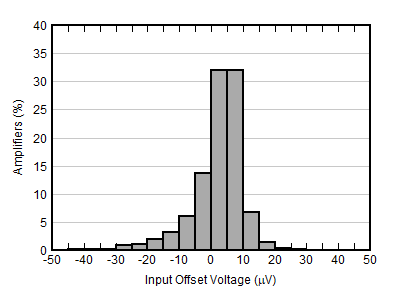SBOS925D December 2020 – April 2024 OPA2391 , OPA391
PRODMIX
- 1
- 1 Features
- 2 Applications
- 3 Description
- 4 Pin Configuration and Functions
-
5 Specifications
- 5.1 Absolute Maximum Ratings
- 5.2 ESD Ratings
- 5.3 Recommended Operating Conditions
- 5.4 Thermal Information: OPA391
- 5.5 Thermal Information: OPA2391
- 5.6 Thermal Information: OPA4391
- 5.7 Electrical Characteristics: OPA391DCK and OPA2391YBJ
- 5.8 Electrical Characteristics: OPA4391PW
- 5.9 Typical Characteristics
- 6 Detailed Description
- 7 Application and Implementation
- 8 Device and Documentation Support
- 9 Revision History
- 10Mechanical, Packaging, and Orderable Information
Package Options
Refer to the PDF data sheet for device specific package drawings
Mechanical Data (Package|Pins)
- DCK|5
Thermal pad, mechanical data (Package|Pins)
Orderable Information
3 Description
The OPA391, OPA2391, and OPA4391 (OPAx391) devices feature a unique combination of high bandwidth (1MHz) along with very-low quiescent current (24µA) in high-precision amplifiers. These features combined with rail-to-rail input and output make these devices an exceptional choice in high-gain, low-power applications. Ultra-low input bias current of 10fA, only 45µV of offset (maximum), and 1.2µV/°C of drift over temperature help maintain high precision in ratiometric and amperometric sensor front ends that have demanding low-power requirements.
The OPAx391 use Texas Instruments' proprietary e‑trim™ operational amplifier technology, enabling a unique combination of ultra-low offset and low input offset drift without the need for any input switching or auto-zero techniques. The CMOS-based technology platform also features a modern, robust output stage design that is tolerant of high output capacitance, alleviating stability problems that are common in typical low-power amplifiers.
| PART NUMBER | CHANNEL COUNT | PACKAGE(1) |
|---|---|---|
| OPA391 | Single | DBV (SOT-23, 5)(2) |
| DCK (SC70, 5) | ||
| OPA2391 | Dual | D (SOIC, 8)(2) |
| DGK (VSSOP, 8)(2) | ||
| YBJ (DSBGA, 9) | ||
| OPA4391 | Quad | PW (TSSOP, 14) |
 High Input Impedance, Low Offset
Buffer
High Input Impedance, Low Offset
Buffer OPA391 Offset Voltage
OPA391 Offset Voltage